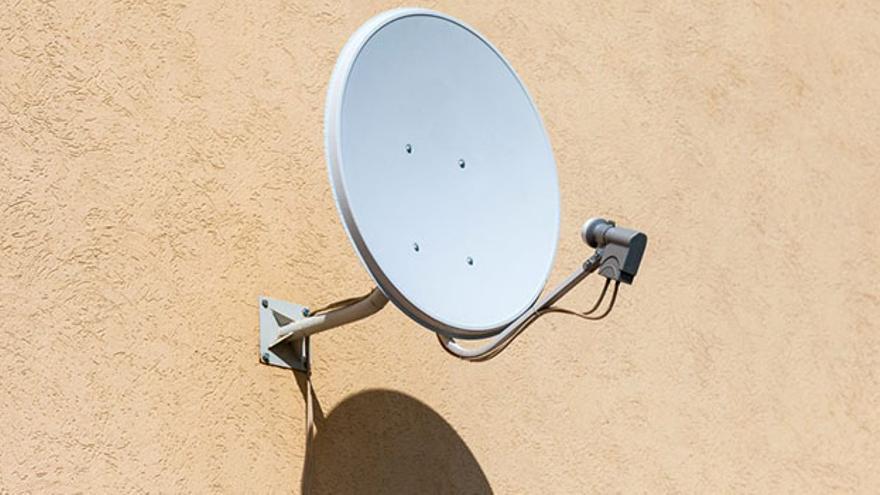
![]() 14ymedio, Natalia Lopez Moya, Havana, 30 July 2023 — Inflation continues to take its toll on Cuban pocketbooks. In addition to increases in the cost of transportation and food, the fees families pay to watch foreign television programs via illegal satellite dishes are also going up, doubling in some Cuban neighborhoods to as much as 1,000 pesos a month.
14ymedio, Natalia Lopez Moya, Havana, 30 July 2023 — Inflation continues to take its toll on Cuban pocketbooks. In addition to increases in the cost of transportation and food, the fees families pay to watch foreign television programs via illegal satellite dishes are also going up, doubling in some Cuban neighborhoods to as much as 1,000 pesos a month.
“I can’t afford it so I told the boy who installed the cable to take it out,” says Maritza, a retiree in Central Havana’s Cayo Hueso neighborhood who has been enjoying the service for more than a dozen years thanks to wiring hidden in a fake water pipe leading to her house. The densely populated borough has one of the capital’s highest concentrations of satellite dishes.
“One day I learned the price was suddenly going from 250 pesos, which I had been paying, to 500 pesos.” Maritza complains. “I can’t afford something like that on my 1,400-peso monthly pension.” The service gave her access to variety shows, soap operas and “all the things having to do with Cuba such as the news programs on channel 41 [America TeVe].”
Costs are skyrocketing even more for suppliers whose cables are apt to be cut, stolen and resold on the black market, a growing practice on Havana’s rooftops. To replace their stolen wiring, satellite owners must shell out hard currency or turn to friends and family members overseas willing to use their Visas or Mastercards to buy it from online stores that ship to the island.
In Luyanó, an area in the Tenth of October borough, prices have risen even more. “There are packages that cost 800 pesos a month and others that cost 1,000 depending on the number of channels you choose,” says Dayron, a young man who acts as a broker between local customers and the owner of two powerful satellite dishes. “Everything has gone up and so everything costs us more,” he explains.
He points out that, in addition to maintenance costs, there are costs for the electricity needed to operate the devices, for DirecTV activation cards and for the cables that deliver the programming to customers. If owners of satellite dishes do not want to be reported to the authorities, government inspectors must also be paid to “turn a blind eye.” And to keep the most politically extreme neighbors from “wagging their tongues,” they are provided the service for free.
Though satellite dishes have been in the censors’ crosshairs for decades, efforts in Havana to root them out them have decreased significantly in recent years. After mass protests on 11 July 2021 (’11J’), however, the Cuban regime redoubled its efforts to crack down on the devices in order to prevent images of anti-government demonstrations from being disseminated.
Police operations aimed at finding the devices became so frequent that, in large areas of the city, satellite dish owners decided to suspend operations and wait for conditions to improve. Little by little, they reconnected customers and brought back their schedule of miniseries, movies, and reality shows.
These antennas are most commonly found amid Central Havana’s crowded streets and densely packed rooming houses. Among the first high-tech devices, they changed the way media was consumed on the island in the 1990s. They were followed by the paquete [’weekly packet’], the USB memory stick and, for nearly the last five years, the mobile phone internet connection.
More recently, however, satellite dishes have faced a new competitor: streaming services such as Netflix. Many Cuban emigrés subscribe to the service overseas and share their access codes with family members on the island. In some cases, the relatives in Cuba have a Fire TV device, or something similar, that allows them to enjoy a wide range of programming options on their televisions.
But connectivity problems, the high cost of web browsing and slow internet speeds limit the possibilities for watching movies or miniseries using these devices. In the poorest neighborhoods, satellite antennas still reign supreme because of their reliability and low cost, a situation that could change with the current rate increases.
“The greatest demand is for programs from Miami from [broadcasters such as] America TeVe, Telemundo, Spanish-language CNN and others that offer miniseries, documentaries and soap operas,” says Dayron. “Most of customers have told us they want to continue with the service even though it will cost more. “They’re already hooked and what they really don’t want, above all, is to go back to watching Cuban television.”
____________
COLLABORATE WITH OUR WORK: The 14ymedio team is committed to practicing serious journalism that reflects Cuba’s reality in all its depth. Thank you for joining us on this long journey. We invite you to continue supporting us by becoming a member of 14ymedio now. Together we can continue transforming journalism in Cuba.
